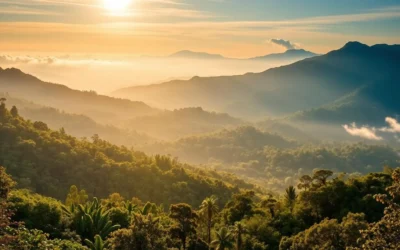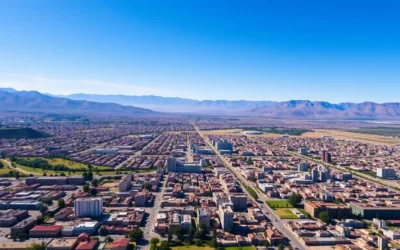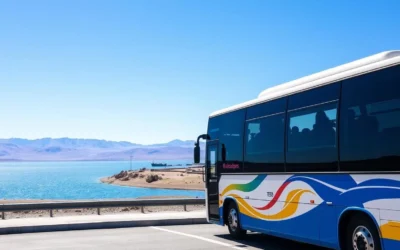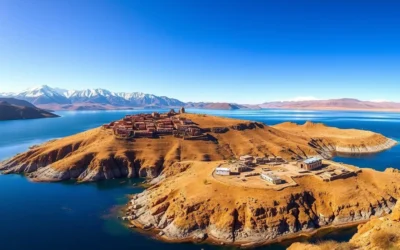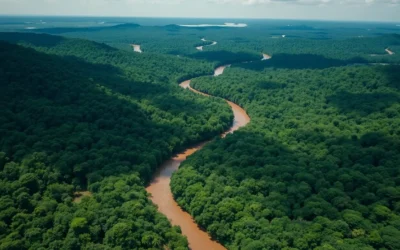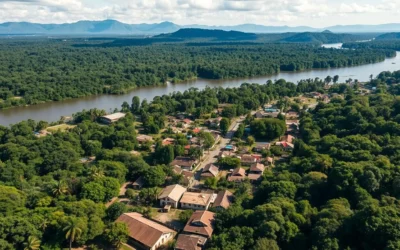Did you know that Tarija is home to Bolivia’s wine country, producing over 70% of the nation’s wine at some of the highest vineyards in the world (1,800+ meters above sea level)? This southern Bolivian gem remains one of South America’s best-kept secrets, offering visitors a delightful blend of Mediterranean-like climate, vineyard-covered landscapes, and a relaxed atmosphere that feels worlds away from the high-altitude bustle of La Paz or the salt flats of Uyuni.
Getting to Tarija, Bolivia
Tarija is nestled in a beautiful valley in southern Bolivia
Reaching Tarija requires a bit more effort than Bolivia’s main tourist destinations, but the journey is well worth it for travelers seeking authentic experiences away from the crowds.
By Air
The most convenient way to reach Tarija is by flying into Capitán Oriel Lea Plaza Airport (TJA). There are regular direct flights from:
- La Paz (1.5 hours)
- Santa Cruz (1 hour)
- Cochabamba (1 hour)
Boliviana de Aviación (BoA) is the main carrier serving these routes, with flights typically costing between $75-120 USD one way.
Find the Best Flights to Tarija
Compare prices and book your flights to experience Bolivia’s wine country.
By Bus
For budget travelers or those seeking to experience Bolivia’s dramatic landscapes, buses connect Tarija with major cities:
- From Sucre: 10-12 hours (80-140 BOB / $12-20 USD)
- From La Paz: 16-18 hours (100-150 BOB / $15-22 USD)
- From Santa Cruz: 14 hours (90-130 BOB / $13-19 USD)
Bus quality varies significantly, so it’s worth paying extra for a more comfortable ride, especially for overnight journeys. Most buses have reclining seats, but the roads can be winding and bumpy in sections.
From Argentina
Travelers coming from northern Argentina can cross the border at La Quiaca (Argentina) to Villazón (Bolivia), then take a trufi (shared taxi) to Tarija. The border crossing is straightforward, but the journey from Villazón to Tarija takes about 6 hours on mostly unpaved mountain roads.
Best Time to Visit Tarija

Tarija enjoys a privileged climate compared to much of Bolivia, with mild temperatures year-round and significantly less rainfall than the country’s tropical regions.
Recommended Months
The best time to visit Tarija is during the dry season from April to October. During these months, you’ll enjoy:
- Clear, sunny days with temperatures between 20-25°C (68-77°F)
- Cool evenings around 10-15°C (50-59°F)
- Minimal rainfall and ideal conditions for outdoor activities
- Wine harvest season (February-April) if you’re interested in vineyard activities
Months to Avoid
The rainy season runs from November to March, with January being the wettest month. While rainfall isn’t as heavy as in other parts of Bolivia, it can disrupt outdoor activities and make some rural roads difficult to navigate.
| Season | Months | Temperature | Rainfall | Notes |
| Dry Season (Best) | April-October | 20-25°C (68-77°F) | Minimal | Perfect for wine tours and outdoor activities |
| Rainy Season | November-March | 25-30°C (77-86°F) | Moderate | Lush landscapes but occasional travel disruptions |
| Harvest Season | February-April | 22-28°C (72-82°F) | Decreasing | Special vineyard activities and festivals |
Special Events
If you’re interested in local culture, consider timing your visit with these events:
- Fiesta de la Vendimia (Wine Harvest Festival) – March/April
- Virgen de Chaguaya Festival – August 15 to September 14
- Tarija’s Foundation Day – July 4
Getting Around Tarija

Tarija is a relatively compact city with a walkable center, making it easy to explore on foot. For ventures beyond the city center, several transportation options are available.
Taxis
Taxis are plentiful, safe, and affordable in Tarija. Most rides within the city cost between 10-20 BOB ($1.50-3 USD). Unlike in La Paz or Sucre, taxi scams are rare in Tarija, but it’s still good practice to agree on the fare before starting your journey.
Trufis (Shared Taxis)
For trips to nearby attractions like San Jacinto Dam, Tomatitas, or San Lorenzo, trufis (shared taxis) are the most economical option. These follow fixed routes and depart when full from designated spots around the city. Fares range from 3-10 BOB ($0.50-1.50 USD) depending on the distance.
Rental Cars
If you plan to explore the wine region independently or venture to more remote areas like the Sama Biological Reserve, renting a car gives you maximum flexibility. Several local agencies offer rentals, with prices starting around $40-50 USD per day.
Explore Tarija at Your Own Pace
Rent a car to discover Tarija’s vineyards and surrounding attractions on your schedule.
Organized Tours
For wine tours and trips to more distant attractions, organized tours are convenient and often include transportation, guides, and entrance fees. The most popular is the wine tour that departs daily from Plaza Luis de Fuentes y Vargas.
Map of Tarija’s city center
Where to Stay in Tarija

Tarija offers a range of accommodation options to suit different budgets and preferences. Most hotels and guesthouses are concentrated in the city center, providing easy access to restaurants, shops, and the main plaza.
Budget Options
Namaste Hostel
A clean, colorful hostel with excellent reviews, offering both dorm and private rooms. The friendly owners, spacious common areas, and included breakfast make this a top choice for budget travelers.
- Dorm beds from 50 BOB ($7 USD)
- Private rooms from 140 BOB ($20 USD)
- Free breakfast and kitchen access
- Central location near Plaza Luis de Fuentes
Mid-Range Options
Hotel Mitru – Tarija
Located just a short walk from the main square, Hotel Mitru offers comfortable rooms, a daily breakfast buffet, and helpful amenities like a tour desk and luggage storage. The garden and terrace provide pleasant spaces to relax after a day of exploring.
- Rooms from 280 BOB ($40 USD)
- Excellent breakfast included
- Helpful staff for arranging tours
- Quiet yet central location
Luxury Options
Hotel Los Parrales
For those seeking a more luxurious stay, Hotel Los Parrales offers spacious rooms with panoramic views of the Guadalquivir River. Guests can enjoy the outdoor swimming pool, beautiful garden, and excellent on-site restaurant and bar.
- Rooms from 490 BOB ($70 USD)
- Swimming pool and garden
- River views from private balconies
- La Viña restaurant serving regional specialties
Find Your Perfect Stay in Tarija
Compare prices and book accommodations that match your style and budget.
Top Things to Do in Tarija, Bolivia

1. Take a Wine Tour in Valle de la Concepción
Tarija’s wine region, Valle de la Concepción, is the heart of Bolivia’s wine production. The combination of high altitude (1,800+ meters) and temperate climate creates unique flavors that are gaining international recognition.
The most popular option is the minivan tour that departs daily from Plaza Luis de Fuentes y Vargas, costing around 100 BOB ($15 USD) per person. Tours typically include:
- Visits to 2-3 industrial wineries
- A stop at a singani distillery (Bolivia’s national spirit)
- Tastings at smaller boutique vineyards
- Generous sampling opportunities, especially at Casa Vieja
Insider Tip: Most wine tours are conducted in Spanish. If you need an English-speaking guide, arrange a private tour through your hotel or the tourism office on the main plaza.
Experience Tarija’s Wine Country
Book a guided tour to discover Bolivia’s emerging wine scene with expert commentary and tastings.
2. Explore Plaza Luis de Fuentes y Vargas
The heart of Tarija, this beautiful main square is surrounded by colonial architecture, cafes, and restaurants. It’s the perfect place to people-watch, enjoy the relaxed atmosphere, and observe local life. Don’t miss the Cathedral of San Bernardo on the plaza’s eastern side.

3. Visit San Jacinto Dam
Located about 30 minutes from the city center, San Jacinto Dam offers beautiful views, especially at sunset. Lakeside restaurants serve the local specialty of cangrejos (tiny crabs eaten whole), which pair perfectly with Tarija wine. Fishermen also offer boat rides on the lake for a small fee.
To get there, take a trufi from the corner of Domingo Paz y Bolivian for around 3.50 BOB ($0.50 USD) each way.
4. Discover the Museum of Paleontology and Archaeology
This fascinating museum houses an impressive collection of fossils and skeletons, including a giant sloth the size of an elephant and a large armadillo ancestor as big as a car. There’s even a shrunken mummified corpse measuring just 35cm.
The museum is free to enter and is open Monday to Saturday from 9am-12pm and 3pm-6pm.
5. Day Trip to San Lorenzo
Just over 30 minutes north of Tarija, the charming countryside town of San Lorenzo feels like stepping back in time. Built around a central plaza, this authentic Bolivian town offers a glimpse into local life away from tourist crowds.
Don’t miss the sweet treats from the market and the small museum Casa del Moto Méndez, once home to independence hero Colonel Eustaquio Méndez Arenas.

6. Visit Unique Historical Buildings
Tarija boasts several unusual architectural gems worth exploring:
- Castillo Azul (Blue Castle) – A privately owned, supposedly haunted mansion with striking blue and white striped exterior
- Casa Dorada (Golden House) – A restored museum in art-nouveau style featuring an extravagant antique furniture collection
- El Picacho – The riverfront home of former Bolivian president Jaime Paz Zamora, housing gifts from world leaders and important artwork
7. Hike to Coimata Waterfalls
These natural swimming holes and waterfalls are where locals cool off during summer months. Even in cooler seasons, it’s a pretty spot to visit. The journey takes about 20 minutes from central Tarija, with trufis departing from Calle Comercio inside Mercado Campesino for around 5 BOB ($0.75 USD) each way.

8. Experience the Virgen de Chaguaya Festival
If you visit between August 15 and September 14, you can witness the annual pilgrimage to the Church of Chaguaya. This important cultural event draws people from as far as northern Argentina, with many walking the 60km from Tarija City to Chaguaya (some even arriving on their knees).
Street stalls around the church sell local foods such as chirriadas (corn tortillas), tamales, and baked pork, creating a festive community atmosphere.
Where to Eat in Tarija

Tarija offers excellent dining options, from local market stalls to upscale restaurants. The region’s wine production influences its culinary scene, with many establishments proudly serving local vintages alongside traditional dishes.
Local Specialties to Try
- Saice – A hearty meat stew served with rice and potatoes
- Cangrejos – Tiny crabs eaten whole, a local delicacy
- Sopa de Maní – Peanut soup with vegetables and beef
- Mondongo – Spicy pork stew with corn
- Chuflay – Popular cocktail made with singani and ginger ale
Best Places to Eat
Mercado Central
One of the cleanest and most modern food markets in Bolivia, Tarija’s Mercado Central is perfect for breakfast or lunch. Try the sopi de mani (peanut soup), sajta de pollo (chicken stew), or trucha (trout). An almuerzo (two-course lunch with drink) costs as little as 10 BOB ($1.50 USD).
Location: Corner of Sucre & Domingo Paz
El Fogón del Gringo
This Argentine-style BBQ steakhouse serves up huge, perfectly-cooked steaks with an extensive range of sides and salads. Not suitable for vegetarians, but a meat-lover’s paradise.
Location: La Madrid 1051
Gattopardo
Located on the main square, Gattopardo taverna offers traditional Bolivian fare and international dishes. It’s a great place to people-watch with a glass of local wine or a chuflay cocktail.
Location: Plaza Luis de Fuentes
Belen Cafe
A vegetarian and vegan-friendly option with good coffee and excellent carrot cake. A rarity in meat-loving Bolivia, this cafe provides a welcome alternative for those with dietary restrictions.
Location: Colon 536
Practical Travel Tips for Tarija

Money and Costs
Tarija is an affordable destination by international standards. The local currency is the Boliviano (BOB).
- Budget travelers can get by on 150-250 BOB ($22-36 USD) per day
- Mid-range travelers should budget 250-500 BOB ($36-72 USD) per day
- ATMs are available in the city center, but carry cash for excursions to rural areas
- Credit cards are accepted at larger hotels and restaurants, but not everywhere
Language
Spanish is the primary language in Tarija, and unlike in La Paz or other tourist centers, English is not widely spoken. Learning a few basic Spanish phrases will greatly enhance your experience:
- “Hola” – Hello
- “Gracias” – Thank you
- “Por favor” – Please
- “¿Cuánto cuesta?” – How much does it cost?
- “¿Dónde está…?” – Where is…?
Safety
Tarija is considered one of Bolivia’s safest cities, with a noticeably lower crime rate than La Paz or Santa Cruz. Nevertheless, standard travel precautions apply:
- Keep valuables secure and be aware of your surroundings
- Use official taxis, especially at night
- Carry a photocopy of your passport rather than the original
- Be cautious with altitude if you’ve just arrived from lower elevations
What to Pack
Tarija’s climate requires versatile packing:
- Lightweight clothing for warm days
- A light jacket or sweater for cool evenings
- Comfortable walking shoes
- Sun protection (hat, sunglasses, sunscreen)
- Insect repellent, especially during summer months
- A reusable water bottle
Travel Insurance: Always ensure you have comprehensive travel insurance that covers medical emergencies, trip cancellations, and personal belongings. Bolivia’s healthcare system may not meet international standards, especially in remote areas.
Why Tarija Should Be on Your Bolivia Itinerary

Tarija offers a refreshing contrast to Bolivia’s more famous destinations. While La Paz impresses with its dramatic setting and Uyuni dazzles with otherworldly salt flats, Tarija charms with its relaxed pace, warm climate, and culinary delights.
Whether you’re sipping locally-produced wine against a backdrop of rolling vineyards, exploring colonial architecture in the city center, or venturing to nearby natural attractions, Tarija provides authentic experiences away from the tourist crowds.
With its combination of natural beauty, cultural heritage, and gastronomic pleasures, this southern Bolivian gem deserves at least 3-4 days on your itinerary. Your reward will be a deeper understanding of Bolivia’s diversity and memories of a place that still feels like a genuine discovery.
Ready to Explore Tarija?
Start planning your journey to Bolivia’s wine country with these essential travel services.
The above is subject to change.
Check back often to TRAVEL.COM for the latest travel tips and deals.

